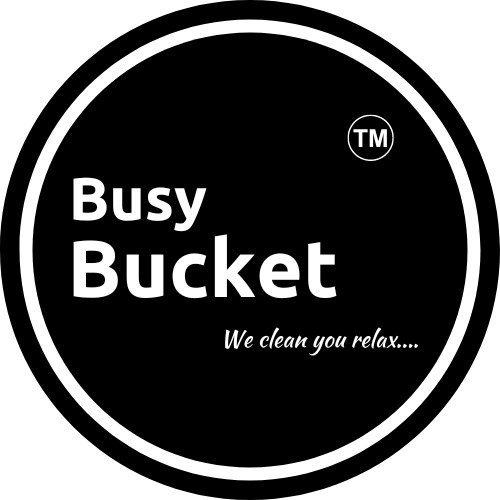Water tank cleaning is a critical process that involves removing impurities, sediments, and other contaminants from water storage systems. However, there are many misconceptions surrounding water tank cleaning that can lead to ineffective or even harmful cleaning practices. Here are ten common misconceptions about water tank cleaning:
Debunking Common Myths: The Truth About Water Tank Cleaning
1. Tanks need cleaning only when the water looks dirty: One of the most common misconceptions about water tank cleaning is that it is necessary only when the water appears to be visibly dirty. However, contaminants such as bacteria and algae can grow in water even if it appears clear, making regular cleaning essential to maintaining water quality.
2. Chemicals are not required for water tank cleaning: While some people believe that water tanks can be cleaned with just water or soap, the truth is that specialized cleaning agents are necessary to remove bacteria, algae, and other contaminants that can be harmful to humans health.
3. DIY cleaning is effective: While it may be tempting to clean your water tank yourself, hiring a professional water tank cleaning company is the best way to ensure that your tank is thoroughly cleaned and sanitized.
4. Water tanks don’t need to be emptied completely: Many people believe that water tanks don’t need to be emptied entirely before cleaning, but this is not true. Emptying the tank completely is necessary to remove any sediment and debris that may have settled at the bottom.
5. Only the inside of the tank needs cleaning: Cleaning only the inside of the tank is not enough to maintain water quality. The exterior of the tank, including the roof, vents, and access points, must also be cleaned to prevent contamination.
6. Water tanks can be cleaned anytime: Water tanks should be cleaned regularly, but cleaning them during the rainy season or during times of high humidity can increase the risk of bacteria and algae growth.
7. Regular cleaning is not necessary for new tanks: New water tanks may contain debris and contaminants from the manufacturing process and should be cleaned before use. Regular cleaning is also necessary to prevent the buildup of sediment and bacteria over time.
8. Tanks can be cleaned quickly: Proper water tank cleaning is a time-consuming process that involves draining the tank, scrubbing the interior, and disinfecting the tank. Rushing the cleaning process can result in incomplete cleaning and can compromise water quality.
9. All water tanks require the same cleaning process: Different types of water tanks require different cleaning processes. For example, concrete tanks may require more aggressive cleaning agents than plastic tanks.
10. Tank cleaning is a one-time process: Water tanks should be cleaned regularly, depending on usage and environmental factors. Regular cleaning can help to prevent the buildup of contaminants and ensure that the water stored in the tank is safe for consumption.
Read Also- Why Water Tank Cleaning is Essential for Healthy Living
Why choose a water tank cleaning service?
Here are some reasons why you should choose a water tank cleaning service:
Health and safety: Dirty water tanks can harbor harmful bacteria, viruses, and other pathogens that can cause waterborne diseases. Regular cleaning by a professional ensures that the water in your tank is free from contaminants and safe to use.
Efficiency: A clean water tank ensures that the water supply is not compromised by sediment buildup or clogging. This indicates that water moves easily and effectively, which may lower water costs.
Longevity: Preventing corrosion and rust, which can harm the tank and shorten its life, can be done by cleaning water containers regularly. Regular upkeep can increase the lifespan of your tank and ultimately reduce your costs.
Expertise: Professional water tank cleaners have the expertise, equipment, and chemicals necessary to thoroughly clean your water tank. They can identify and address any issues that may arise during the cleaning process.
Read Also- Benefits of Hiring a Professional Deep Cleaning Company
Conclusion
In conclusion, there are many misconceptions about water tank cleaning that can lead to serious health risks and damage to the tank. One of the most common misconceptions is that regular chlorination is enough to keep a water tank clean. However, chlorination alone cannot remove sediment, debris, and other contaminants that can accumulate in the tank over time.
Another misconception is that cleaning a water tank is a simple DIY task that can be done with basic equipment and household cleaners. However, cleansing a water tank is a difficult process that needs specialized tools, skilled personnel, and careful adherence to safety protocols.
Furthermore, many people believe that water tanks only need to be cleaned once every few years or even less frequently. However, the frequency of cleaning depends on many factors, such as the size of the tank, the quality of the water supply, and the amount of usage.
It is important to dispel these misconceptions and raise awareness about the importance of regular and proper water tank cleaning. Neglecting to clean a water tank can lead to serious health risks and damage to the tank itself, which can be costly to repair or replace. Therefore, it is essential to seek professional help and follow best practices to ensure the safety and quality of the water supply


